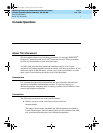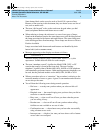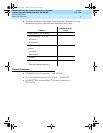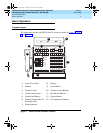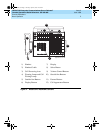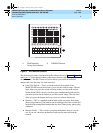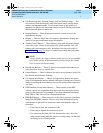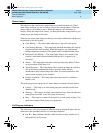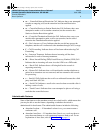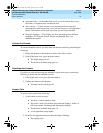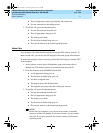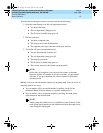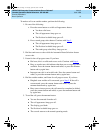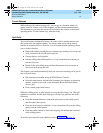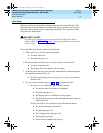
DEFINITY® Enterprise Communications Server Release 7
Console Operations Quick Reference
555-230-890
Issue 3
June 1999
Console Operations
9Basic Operation
■ co — Controlled Outward Restriction Call. Indicates that a user attempted
to make an outgoing call, but the extension has Outward Restriction
applied.
■ cs — Controlled Station-to-Station Restriction Call. Indicates that a user
attempted to make a call to another extension, but the extension has
Station-to-Station Restriction applied.
■ ct — Controlled Termination Restriction Call. Indicates that a user or an
outside caller attempted to make a call to an extension, but the called
extension has Termination Restriction applied.
■ d — Don’t Answer or Cover. Indicates that the user did not answer the
telephone, and the call is redirected to the attendant through Call Coverage.
■ f — Call Forwarding. Indicates that a call has been redirected using Call
Forwarding.
■ ic — Intercept Treatment. Indicates that an incoming call has been
redirected as a result of intercept treatment.
■ ld — Direct Inward Dialing (DID) Listed Directory Number (LDN) Call.
Indicates that an incoming call came in on the LDN over a DID trunk.
■ rc — Recall Call. Indicates that a call being held on the console is
requesting more help.
■ rt — Return Call. Indicates that a call transferred to another telephone or
parked at an extension was not answered, and has returned to the console
for processing.
■ s — Send All Calls. Indicates that a call was redirected because the called
party used Send All Calls.
■ sc — Serial Call. Indicates a recall to the console when an outside caller is
making a series of calls.
■ tc — Trunk Control. Indicates that a user attempted to place a call using a
trunk that has controlled access.
Administrable Features
Some of the features on the attendant console are administrable, which means that
you may be able to use the feature, depending on whether the switch is
administered for that feature. The administrable features include the following:
■ Attendant Lockout — If Attendant Lockout is on, you cannot reenter a
conference call.
■ Attendant Auto Start — If Attendant Auto Start is on, you do not have to
press the
START button or a call appearance button to make a call. For an
explanation of Auto Start, refer to ‘‘Auto Start’’ on page 17
.
230890_3.bk Page 9 Tuesday, April 20, 1999 12:57 PM



